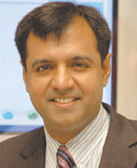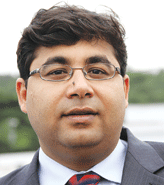No products in the cart.
Budget 2012-13 reactions
 Education is a subject of national importance and the finance minister has presented a very balanced budget on education. Union Budget 2012-13 has supported industry’s long-time demand to improve the provision and standards of education in the country. An increase in allocation for RTE-SSA and RMSA reiterates the government’s commitment to education. Over 70 percent of Indians will be of working age in 2025. In this context, universalising access to secondary education, increasing the percentage of our scholars in higher education and providing skills training is necessary. A clear road map will ensure effective implementation.
Education is a subject of national importance and the finance minister has presented a very balanced budget on education. Union Budget 2012-13 has supported industry’s long-time demand to improve the provision and standards of education in the country. An increase in allocation for RTE-SSA and RMSA reiterates the government’s commitment to education. Over 70 percent of Indians will be of working age in 2025. In this context, universalising access to secondary education, increasing the percentage of our scholars in higher education and providing skills training is necessary. A clear road map will ensure effective implementation.
Shiv Nadar, chairman, HCL Technologies Ltd and Shiv Nadar Foundation
 In the light of slower economic growth, the 18 percent increase in budgetary allocation for education definitely gives us hope. However, there are no major initiatives encouraging the participation of private players, technology usage in education and collaborative learning at the grassroots. We were looking forward to a more defined regulatory structure for utilisation of ICT in schools. The budget leaves a lot to be desired for capacity enhancement and encouraging private sector participation.
In the light of slower economic growth, the 18 percent increase in budgetary allocation for education definitely gives us hope. However, there are no major initiatives encouraging the participation of private players, technology usage in education and collaborative learning at the grassroots. We were looking forward to a more defined regulatory structure for utilisation of ICT in schools. The budget leaves a lot to be desired for capacity enhancement and encouraging private sector participation.
Anil Goyal, director (strategy and business development), Mexus Education Pvt. Ltd
 There are two key policy directives in Budget 2012-13 which augur well for the education sector. The public-private partner-ship scheme for 2,500 model schools is both an impetus and acknowledgment of the importance of the private sector in creating education infrastructure. The creation of a Credit Guarantee Fund for education loans will particularly benefit aspirants with low financial security to access loans at the lowest end of the skills development market. Service tax exemption for school education is also a decidedly welcome step.
There are two key policy directives in Budget 2012-13 which augur well for the education sector. The public-private partner-ship scheme for 2,500 model schools is both an impetus and acknowledgment of the importance of the private sector in creating education infrastructure. The creation of a Credit Guarantee Fund for education loans will particularly benefit aspirants with low financial security to access loans at the lowest end of the skills development market. Service tax exemption for school education is also a decidedly welcome step.
Shantanu Prakash, managing director, Educomp Solutions Ltd
 The Union Budget for 2012-13 is balanced with several proposals aimed at boosting the education sector. Nearly 31 percent of India’s population is in the age group of 0 to 14 years and needs adequate access to education in a country that has challenges of diversity and reach. Innovations in finding ways to provide technology enabled, cost-effective quality education will be the deciding factor in increasing our literacy rate.
The Union Budget for 2012-13 is balanced with several proposals aimed at boosting the education sector. Nearly 31 percent of India’s population is in the age group of 0 to 14 years and needs adequate access to education in a country that has challenges of diversity and reach. Innovations in finding ways to provide technology enabled, cost-effective quality education will be the deciding factor in increasing our literacy rate.
Beas Dev Ralhan, chief executive officer, Next Education
 A lot of positive steps have been taken in the budget to provide better quality education. But in my opinion it is essential to concentrate on investment per pupil instead of focusing on total outlay. The total allocation might have increased, but is it enough to provide quality education to every child in this country? This amount has to cover a lot of ground such as improving infrastructure in public schools, academics, providing teacher training, investing in technology, etc. To raise national education standards it is essential for government schools to have access to the same level of capital investment as independent/private schools.
A lot of positive steps have been taken in the budget to provide better quality education. But in my opinion it is essential to concentrate on investment per pupil instead of focusing on total outlay. The total allocation might have increased, but is it enough to provide quality education to every child in this country? This amount has to cover a lot of ground such as improving infrastructure in public schools, academics, providing teacher training, investing in technology, etc. To raise national education standards it is essential for government schools to have access to the same level of capital investment as independent/private schools.
Harshita Mann, director, Lancers International School, Gurgaon














Add comment